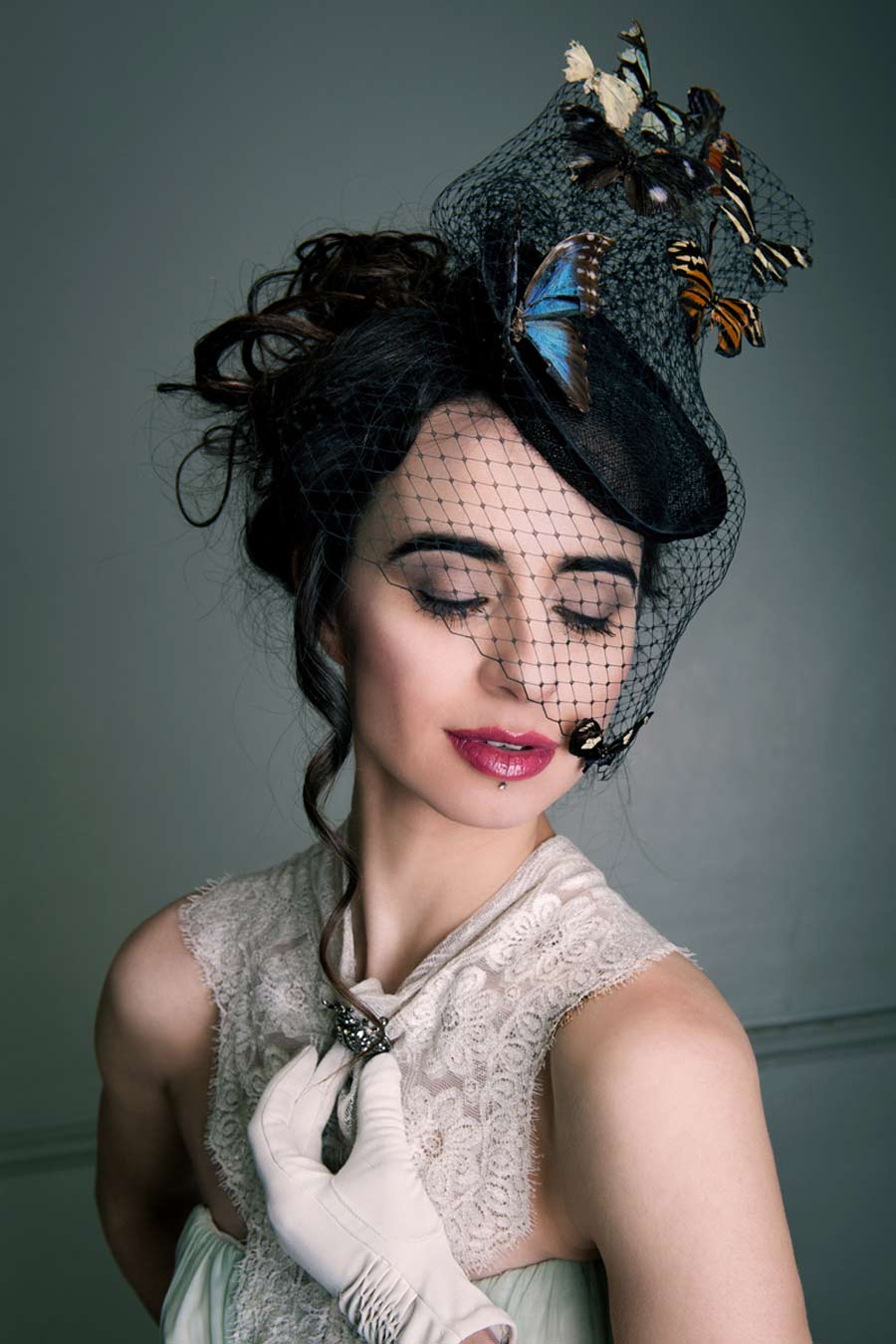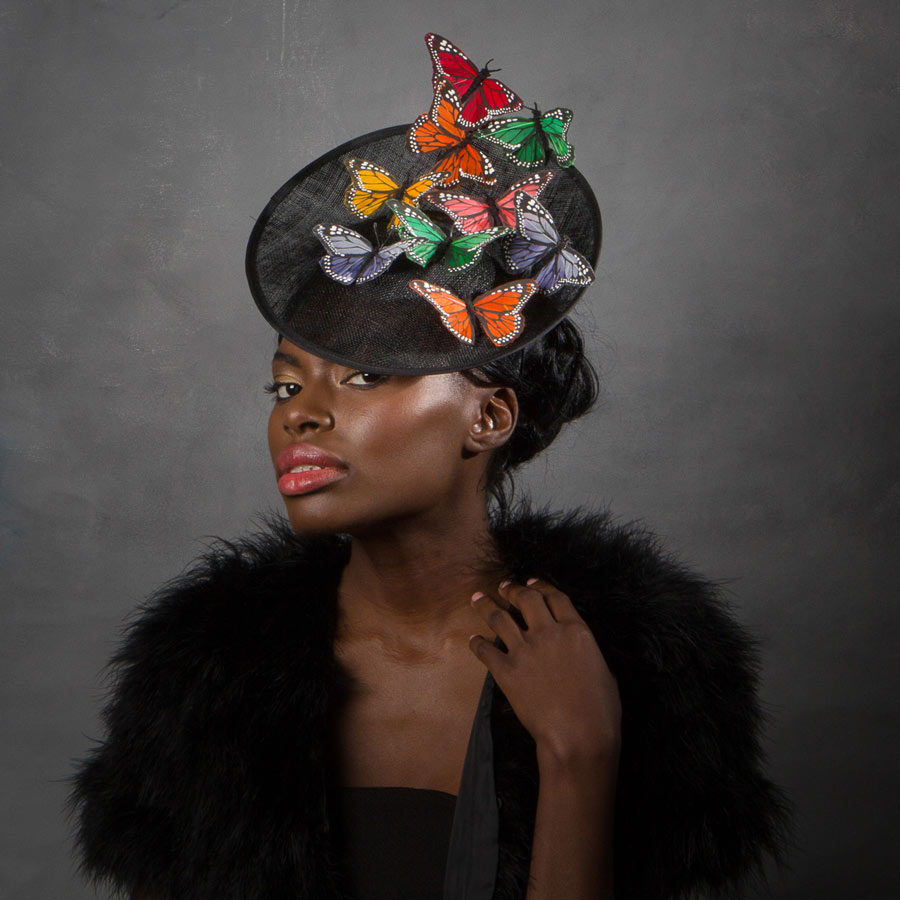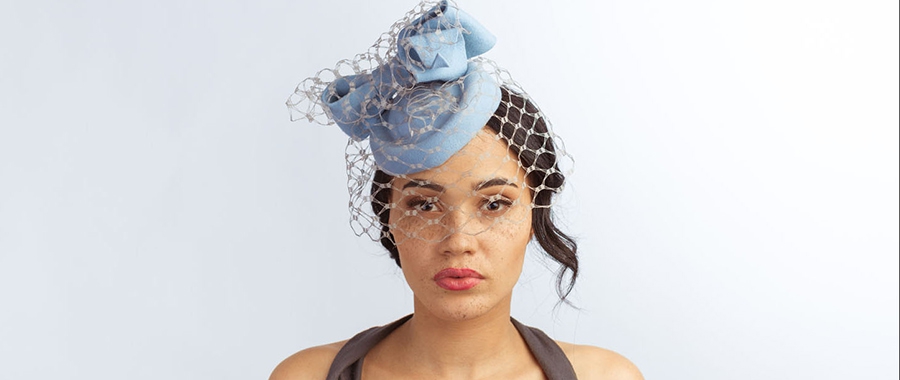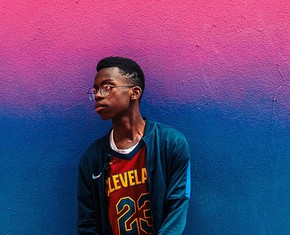The views expressed in our content reflect individual perspectives and do not represent the authoritative views of the Baha'i Faith.
Sahar Freemantle, a milliner based in London, wants to spread beauty and inspire creativity with her hats.
Sahar specializes in contemporary handcrafted hats for women that are traditionally made, and often tell stories about the wearer through bespoke details.

Sahar Freemantle, founder of Sahar Millinery (photo credit: Sean Afnan Morrissey).
Sahar Millinery also has a sub-brand called UglyLovely, which offers playful exploration, taking inspiration from nature and surrealism. Sahar’s work has been exhibited at the Victoria & Albert Museum, featured in The Guardian, The Independent’s list of best Ascot Hats, on screen in Downton Abbey, and on celebrities such as Ellie Goulding and Paloma Faith.
Sahar has a degree in Performance Costume from Edinburgh College of Art, and was raised in a Baha’i family on a small village farm in the UK. I’ve been enchanted by her work for a number of years, as I found her approach to be uniquely playful, her materials otherworldly, and work possessing exceptional craftsmanship. I grew curious about her approach to the art of millinery, and how her faith informs her creative process, her mode of operating a business, and her contributions to community life and service.
In the first part of her interview with BahaiTeachings.org, we learn about Sahar’s creative childhood, her journey into millinery, her unique and beautiful approach to style and design, and the vision and mission of Sahar Millinery as a global brand.
Q: When were you first introduced to the art of millinery?
A: I studied Performance Costume at Edinburgh College of Art in Scotland, where I was introduced to millinery. Following my graduation, I met a few milliners who had an amazing hat collection in the trunk of their car. I instantly fell in love with these hats and the idea of making them, so I started to learn from my new-found mentors.
Q: What other mediums and art forms were you intrigued by or involved in while growing up?

One of Sahar’s hats worn by Daisy in Downton Abbey.
A: Most forms, to be honest—I had watercolor sets, calligraphy books, all the usual stuff. Looking back, I was always dressing up and experimenting with style. The day my grandfather told me I looked like I’d been “dragged through a hedge backwards” was a pretty good day. I got in trouble at school a few times by having colored hair and pushing the boundaries, but I soon realized that confidence and politeness towards the teachers went a long way. I think my parents were a bit torn, because on the one hand, they wanted me to be a good pupil, and on the other hand, they appreciated my creative expression and agreed that the school’s rules were rather too strict.
Growing up in a Baha’i community was great, because there were always opportunities for the kids to get involved in activities, and a general encouragement towards artistic contributions. At every Baha’i Feast—which are spiritual and administrative gatherings for Baha’i’s that take place every 19 days—the kids would be encouraged to stand up in front of everyone and talk about an accomplishment they’d achieved that month. I remember it being a bit embarrassing at the time, but I’m sure it helped with my confidence and public speaking, growing up with that practice. Baha’i children are encouraged to participate in all aspects of community life, and to contribute to its advancement through arts, crafts and sciences:
Far more extensive programmes should be initiated in those countries where the need exists, to ensure that Baha’i children are nurtured, encouraged to acquire trained minds, illumined with a sound knowledge of the Divine Teachings, well-equipped to participate in the work of the Cause at all levels and to contribute to the arts, crafts and sciences necessary for the advancement of civilization. Such programmes, when open to all children, Baha’i or not, offer a potent means of extending the beneficial influences of Baha’u’llah’s Message to the wider society. – Universal House of Justice to the Followers of Baha’u’llah in Australasia, 21 April 1996.
We had an annual Baha’i fundraiser on my parent’s farm. Every year I’d do the hand-drawn poster to advertise it and decorate cakes to sell that had intricate roses made from icing. As I grew older, my siblings and I took it over and turned it into a festival—every corner of the farm would be a different artistic expression. It was so much fun. Even now I love organizing events, and it’s a crucial part of my job running my business, with opening nights, millinery exhibitions, pop up shops, etc.
Q: What drew you to build a career in millinery?
 A: Pretty much when I saw the hats in the trunk of that car, I knew deep down millinery was my chosen path. I realized that making hats perfectly integrated all that I loved during my time at university—a mix of costume and fashion, sculpture and textiles, designing and making—all handmade to high couture standards. A hat is a small object that can complete an outfit, and make women look and feel fantastic. Beyond all that, a hat covers your head and symbolizes what’s inside—your thought.
A: Pretty much when I saw the hats in the trunk of that car, I knew deep down millinery was my chosen path. I realized that making hats perfectly integrated all that I loved during my time at university—a mix of costume and fashion, sculpture and textiles, designing and making—all handmade to high couture standards. A hat is a small object that can complete an outfit, and make women look and feel fantastic. Beyond all that, a hat covers your head and symbolizes what’s inside—your thought.
Q: What is your mission and vision for Sahar Millinery as a brand?
A: My vision for Sahar Millinery is a global brand, which is more than just selling hats worldwide. The purpose of Sahar Millinery is to create beauty and inspire creativity—with that purpose anything is possible. For example, we run workshops for people wanting to learn millinery or get creative, we run life drawing classes with millinery/costume themes, we create interesting video content exploring craft and costume. All of this is progressing, and there are always new ideas to explore within the context of beauty and creativity.
Q: What informs your style and hat designs?
A: A lot of random things inspire me—anything opulent and gold; beetles, with their delicate nature, armoured shells and the incredible iridescent colours; natural processes—for example the growth of moss on bark, the texture of a rotting pear, rusting metal; fashion, both current and vintage, 40’s millinery being a favorite; traditional cultural costumes—for example the shapes in Japan, the colors in Mexico, madness of Peking Opera.
Q: You use a lot of alternative materials in your work like gold leafed butterflies and animal bones and claws—what motivates you to step outside the box? What other practices and aesthetics set you apart from other milliners in the industry?
A: I’ve never been an inside the box person! Again, growing up as a Baha’i (and the only ethnic minority in my village) meant we were always going to be different, so I figured at a young age that I might as well go along with that. I experimented with fitting in, and found it rather dull. I don’t think I use those materials to be different, however—I use them because I find them interesting and beautiful. A lot of milliners have their own style, so for the customer it’s about finding the milliner whose style you love the most. I think I tell a person’s story through their hat—that might be my story through my ready-to-wear collection, or the customer’s story if it’s a bespoke piece. Through conversation, I might find out what their favorite flower is, or most romantic memory, and have that inspire the design.
















Comments
Sign in or create an account
Continue with Googleor